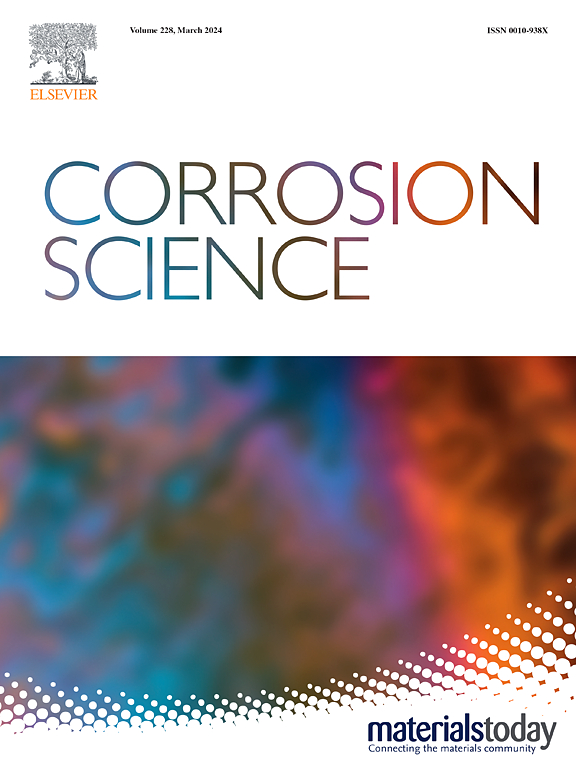高温加压水环境下部分滑移状态下锆合金加氢对裂纹萌生及微动腐蚀机理的影响
IF 7.4
1区 材料科学
Q1 MATERIALS SCIENCE, MULTIDISCIPLINARY
引用次数: 0
摘要
研究了高温高压水环境中加氢对zr合金局部滑移状态下裂纹萌生的影响及微动腐蚀机理。结果表明:加氢导致α-Zr基体内δ-氢化物析出,磨损表面氧化层中T-ZrO2向M-ZrO2转变较多,导致摩擦学转化结构(TTS)层δ-氢化物/ α-Zr界面处形成微裂纹,氧化层中T-ZrO2 / M-ZrO2界面处形成微裂纹;结果表明,加氢使微动腐蚀机制由微动腐蚀裂纹转变为微动腐蚀裂纹与黏着磨损的结合,磨损量略有增加。对于原始zr合金,微裂纹在高剪切应力作用下沿非晶T-ZrO2 / M-ZrO2界面向TTS层扩展,而对于氢化zr合金,微裂纹沿TTS层T-ZrO2 / M-ZrO2界面和δ-氢化物/ α-Zr界面扩展。本文章由计算机程序翻译,如有差异,请以英文原文为准。
Hydrogenation influence on crack initiation and fretting corrosion mechanism of zirconium alloy under partial slip regime in high temperature pressurized water environment
Effect of hydrogenation on crack initiation and fretting corrosion mechanism of Zr-alloy under partial slip regime in high temperature pressurized water enviornment were investigated. The results revealed that hydrogenation led to precipitation of δ-hydride within the α-Zr matrix, and more transforamtion from T-ZrO2 to M-ZrO2 in the oxide layer of worn surface, which resulted in the formation of microcracks at the δ-hydride / α-Zr interface in tribologically transformed structure (TTS) layer and more microcracks at T-ZrO2 / M-ZrO2 interface within oxide layer. As a result, hydrogenation changed the fretting corrosion mechanism from fretting corrosion crack to combination of fretting corrosion crack and adhesive wear, which slightly increased wear volume. For original Zr-alloy, microcracks propagated along the amorphous T-ZrO2 / M-ZrO2 interface into the TTS layer under high shear stress at worn scar edge, while for hydrided Zr-alloy, microcracks propagated along the T-ZrO2 / M-ZrO2 interface and δ-hydride / α-Zr interface in TTS layer.
求助全文
通过发布文献求助,成功后即可免费获取论文全文。
去求助
来源期刊

Corrosion Science
工程技术-材料科学:综合
CiteScore
13.60
自引率
18.10%
发文量
763
审稿时长
46 days
期刊介绍:
Corrosion occurrence and its practical control encompass a vast array of scientific knowledge. Corrosion Science endeavors to serve as the conduit for the exchange of ideas, developments, and research across all facets of this field, encompassing both metallic and non-metallic corrosion. The scope of this international journal is broad and inclusive. Published papers span from highly theoretical inquiries to essentially practical applications, covering diverse areas such as high-temperature oxidation, passivity, anodic oxidation, biochemical corrosion, stress corrosion cracking, and corrosion control mechanisms and methodologies.
This journal publishes original papers and critical reviews across the spectrum of pure and applied corrosion, material degradation, and surface science and engineering. It serves as a crucial link connecting metallurgists, materials scientists, and researchers investigating corrosion and degradation phenomena. Join us in advancing knowledge and understanding in the vital field of corrosion science.
 求助内容:
求助内容: 应助结果提醒方式:
应助结果提醒方式:


